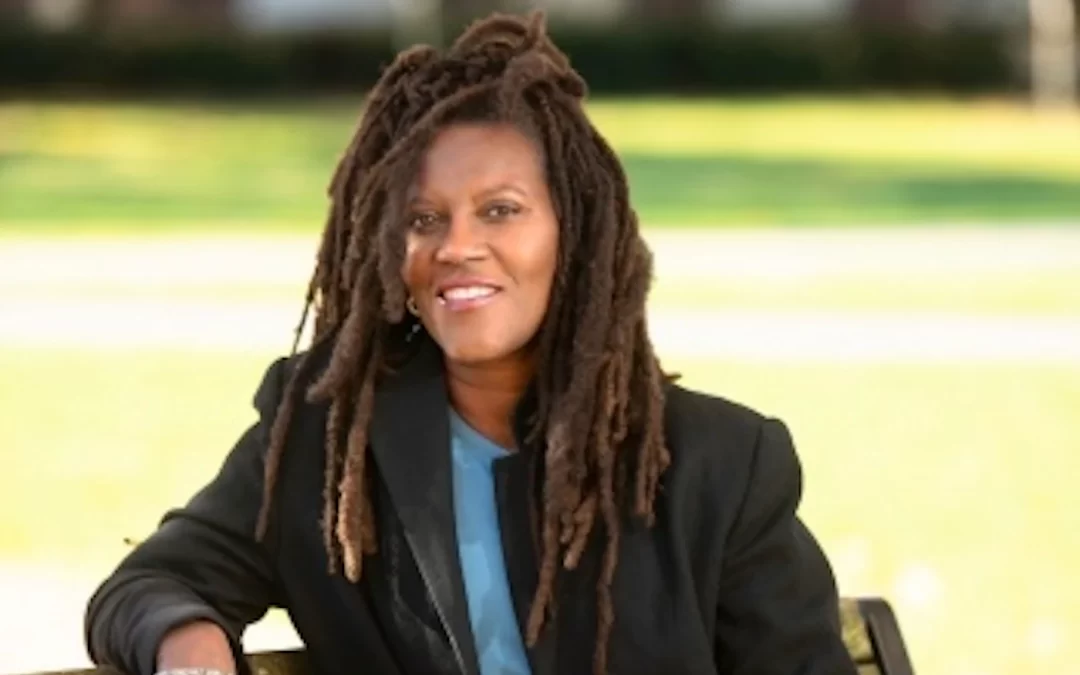Carol White is Professor of Religious Studies at Bucknell University, and a member of the RNA Board of Advisors. We recently each gave talks at a conference on religious naturalism and I was blown away by her presentation. She’s sent me her powerpoint file, and while it lacks her outstanding images and voiceovers, the text conveys the wonderful places where she’s taking her RN orientation.
Talk title: Revisiting “Black Animality” and the Diseased Imagination, or Why America Needs Religious Naturalism
The first set of slides showed outrageous images of “scientific” claims as to black inferiority and white supremacy. Other images are then interspersed with the text below.
Both of these impulses – white supremacy and species supremacy – evoke a hierarchical model of nature built on the “great chain of being” concept, and they have produced violent and harmful consequences. ~ Carol Wayne White (2017)
Religious naturalism also demands that we conceive and enact new forms of relationality with each other and with the more-than-human worlds that are an integral part of our existence here. ~ Carol Wayne White (2020)
Religious naturalism presupposes human animals’ deep, inextricable homology with each other and with other natural processes, drawing our attention to an expansive view of our humanity as an emergent phenomenon, not an achievement. ~ Carol Wayne White (2019)
Confronting the “Diseased Imagination”: Responses from a Black Intellectual Trajectory:
It paints a hateful picture according to its own diseased imagination, and distorts the features of the fancied original to suit the portrait. ~ Frederick Douglass, The Color Line (1881)
This, then, is the end of [his] striving; to be a co-worker in the kingdom of culture, to escape both death and isolation, to husband and use [his] best powers and latent genius. ~ W.E.B. Du Bois, Souls of Black Folk (1903)
It is so simple a fact and one that is so hard, apparently, to grasp: Whoever debases others is debasing himself. ~ James Baldwin, The Fire Next Time (1963)
A Conception of the Human in Religious Naturalism:
Nature requires no explanation beyond itself. It always has existed and always will exist in some shape or form. Its constituents, principles, laws, and relations are the sole reality. This reality takes on new traits and possibilities as it evolves inexorably through time. Human beings are integral parts of nature, and they are natural beings through and through. They, like all living beings, are outcomes of biological evolution. ~ Donald Crosby, Living With Ambiguity (2008)
Expressed succinctly, humans are ultimately the manifestations of many interlocking systems—atomic, molecular, biochemical, anatomical, ecological—apart from which human existence is incomprehensible. ~ Loyal Rue (2018)
We have throughout the ages sought connection with higher powers in the sky or beneath the earth, or with ancestors in some other realm. We have also sought, and found, religious fellowship with one another. And now we realize that we are connected to all creatures. Not just in food chains or ecological equilibria. We share a common ancestor. We share genes for receptors and cell cycles and signal-transduction cascades. We share evolutionary constraints and possibilities. We are connected all the way down. ~ Ursula Goodenough, The Sacred Depths of Nature (1998)
Humanity as Complex Processes of “Becoming:”
Becoming human, or actualizing ourselves as human beings, in this sense, emerges out of an awareness and desire to be more than a conglomeration of pulsating cells. It is suggesting that our humanity is not reducible to organizational patterns or processes dominated by brain structures; nor do DNA, diet, behavior, and the environment solely structure it. Human animals become human destinies when we posit fundamental questions of value, meaning, and purpose to our existence. Our coming to be human destinies is structured by a crucial question: How do we come to terms with life? ~ Carol Wayne White, Black Lives and Sacred Humanity (2016)
Religious naturalism entertains new moral imaginations that resist the logic of white supremacy on all forms of nature:
Fundamental to how and why certain prisoners and certain animals can be exploited, objectified, or made killable within the prison, the farm, the research lab, and the zoo are the social constructions of the human-nonhuman divide – the carceral logics and social meanings that attach to various bodies and populations. ~ Karen Morin (2018)
That the human/animal opposition makes the abjection of human others possible means that insisting on their humanity as a mode of resistance can only re-inscribe the speciesist logic that initiates their exclusion. ~ Marjorie Spiegel (1997)
The day has been. . . In which the greater part of the species, under the denomination of slaves, have been treated by the law exactly upon the same footing as, in England, for example, the animals are still. . . The French have already discovered that the blackness of skin is no reason why a human being should be abandoned without redress to the caprice of a tormentor. It may come one day to be recognized, that the number of legs, the villosity of the skin, or the termination of the os sacrum, are reasons equally insufficient for abandoning a sensitive being to the same fate. . . . The question is not, Can they reason? nor, Can they talk? but, Can they suffer? ~ Jeremy Bentham (1789)
Final Considerations from a Religious Naturalist:
White supremacy and species supremacy distort the wholeness of all animal sentience. One step toward decolonizing nature, toward making it less vulnerable, perhaps, is in honoring nature’s sentience, which is an essential part of being alive, experiencing others, being affected by others, and experiencing well being.
Advocating for climate justice must be done within the wider contexts of injustices that proliferate around the globe, such as historical injustices (e.g., the legacies of slavery and unjust wars), international justice (e.g., trade and immigration), global justice (e.g. poverty, human rights), and the ecological crisis (e.g., species extinction, ocean acidification)…. ~ Stephen Gardiner (2011).
